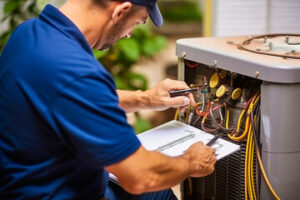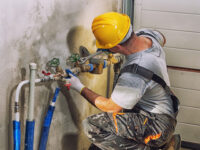Maximizing Comfort with Efficient Air Heating and Conditioning Systems
Ausco Air Heating & Air Conditioning systems are essential for maintaining comfort in any indoor space. Proper climate control enhances relaxation and productivity. Efficient systems ensure that temperature levels remain stable year-round. Professional installation and maintenance are key to consistent performance.
Heating systems work by generating and distributing warm air throughout a space. Furnaces, heat pumps, and boilers are common options for heating. The right system depends on the size and design of the property. Modern systems are designed to be energy-efficient and cost-effective.
Air conditioning systems function by removing heat and humidity from the air. Central air, ductless mini-splits, and portable units are common choices. Effective cooling creates a comfortable environment even in extreme heat. Proper system sizing ensures efficient performance.
Thermostats play a crucial role in regulating temperature. Programmable thermostats allow users to set different temperatures for different times of the day. Smart thermostats offer remote control and automated adjustments. Consistent temperature management reduces energy consumption.
Air quality is closely linked to heating and cooling systems. Proper filtration removes dust, allergens, and pollutants from the air. HEPA filters and UV lights improve indoor air quality. Clean air promotes better health and comfort.
Humidity control is essential for balanced indoor air. Dehumidifiers reduce excess moisture during hot weather. Humidifiers add moisture during dry winter months. Balanced humidity levels prevent mold growth and improve breathing comfort.
Ductwork impacts the efficiency of air systems. Leaky or poorly insulated ducts reduce heating and cooling performance. Sealing and insulating ducts improve airflow and reduce energy waste. Professional maintenance ensures ducts remain in good condition.
Zoned heating and cooling systems provide customized comfort. Separate zones allow for different temperatures in different areas of the home. This reduces energy waste and increases comfort. Advanced zoning systems use dampers and smart controls for efficiency.
Heat pumps offer both heating and cooling in one unit. They transfer heat rather than generating it, making them energy-efficient. Heat pumps work well in moderate climates. Proper installation ensures optimal performance.
Radiant heating systems use heated water or electric coils beneath floors or walls. They provide consistent and even warmth. Radiant heat eliminates cold spots and reduces energy loss. It creates a comfortable and quiet heating experience.
Geothermal systems use underground heat to regulate indoor temperature. These systems are highly energy-efficient and environmentally friendly. Ground loops transfer heat to and from the earth. Geothermal systems have a longer lifespan than traditional HVAC systems.
Regular maintenance extends the lifespan of heating and cooling systems. Cleaning filters, checking refrigerant levels, and inspecting ducts are essential. Professional maintenance ensures systems operate at peak efficiency. Preventative care reduces the risk of breakdowns.
Energy-efficient systems lower utility costs. High SEER and AFUE ratings indicate better performance and energy savings. Proper insulation and weatherproofing enhance system efficiency. Reduced energy consumption benefits both the environment and the budget.
Smart HVAC systems offer advanced control options. Mobile apps allow users to adjust settings remotely. Automated schedules improve energy efficiency and comfort. Smart sensors detect occupancy and adjust temperature levels accordingly.
Airflow is critical for even heating and cooling. Blocked vents and dirty filters reduce airflow and strain the system. Professional duct cleaning improves circulation. Proper vent placement ensures balanced temperature distribution.
Noise levels affect comfort and system performance. Modern HVAC systems are designed to operate quietly. Proper installation and soundproofing reduce operational noise. Quiet systems create a more peaceful indoor environment.
Retrofitting older systems improves performance and efficiency. New technology enhances heating and cooling capabilities. Upgraded thermostats, compressors, and fans increase system longevity. Professional upgrades enhance overall comfort.
Eco-friendly refrigerants reduce environmental impact. Older systems use harmful chemicals that contribute to ozone depletion. Modern refrigerants meet environmental standards. Professional system upgrades ensure compliance with regulations.
Solar-powered HVAC systems reduce reliance on traditional energy sources. Solar panels provide renewable energy for heating and cooling. Combined with battery storage, solar systems increase efficiency. Solar integration lowers long-term energy costs.
Air purification systems complement heating and cooling systems. UV lights, ionizers, and advanced filters remove contaminants. Clean air reduces allergies and respiratory issues. Integrated purification enhances overall comfort.
Professional system sizing ensures proper heating and cooling capacity. Oversized units waste energy and create temperature imbalances. Undersized units strain to meet demand, reducing lifespan. Accurate load calculations ensure optimal system performance.
HVAC zoning reduces energy waste and increases comfort. Separate zones allow for individual temperature control. Smart dampers and controls adjust airflow as needed. Zoning enhances energy efficiency and comfort.
Emergency repair services restore system functionality quickly. Professional technicians diagnose and fix issues promptly. Emergency support prevents prolonged discomfort. Reliable service ensures minimal downtime.
Insulation impacts HVAC performance. Poor insulation allows heat loss in winter and heat gain in summer. Adding insulation to walls, floors, and attics improves efficiency. Proper insulation reduces the load on heating and cooling systems.
Ductless systems offer flexibility and efficiency. Mini-split units provide targeted heating and cooling. Individual controls allow for customized comfort. Ductless systems reduce installation complexity and energy loss.
Air balancing ensures even temperature distribution. Adjusting dampers and vents improves airflow. Professional balancing reduces hot and cold spots. Even temperature levels enhance comfort and system efficiency.
Annual inspections identify potential issues early. Technicians check electrical connections, refrigerant levels, and airflow. Preventative inspections reduce the risk of costly repairs. Early detection increases system lifespan.
Variable-speed systems adjust output based on demand. They operate at lower speeds to maintain consistent temperatures. This reduces energy use and improves comfort. Variable-speed systems enhance humidity control and air quality.
HVAC rebates and incentives reduce installation costs. Energy-efficient systems qualify for financial benefits. Government programs encourage eco-friendly upgrades. Financial incentives improve return on investment.
Maintenance agreements simplify system care. Service contracts cover routine inspections and repairs. Professional maintenance reduces the risk of breakdowns. Reliable care increases system longevity.
High-efficiency filters trap fine particles and allergens. They improve air quality and protect system components. Regular filter replacement ensures proper airflow. Clean filters enhance system performance and indoor comfort.
Ventilation systems improve indoor air circulation. Mechanical ventilators exchange stale indoor air with fresh outdoor air. Balanced ventilation maintains consistent air quality. Proper airflow reduces humidity and contaminants.
Thermostat placement affects system performance. Placing thermostats away from direct sunlight and drafts ensures accurate readings. Professional placement improves temperature consistency. Accurate controls enhance system efficiency.
Seasonal maintenance ensures readiness for changing weather. Spring and fall inspections prevent seasonal strain. Cleaning and adjusting components improve reliability. Seasonal care extends the lifespan of the system.
Eco-friendly HVAC solutions reduce carbon footprints. Energy recovery ventilators capture and reuse heat. Geothermal systems use renewable heat sources. Sustainable options increase energy efficiency and environmental responsibility.
Professional installation ensures proper system function. Technicians size and position components for maximum performance. Improper installation reduces efficiency and lifespan. Expert setup enhances overall system reliability.
Integrated HVAC systems combine heating, cooling, and air purification. Centralized controls simplify operation. Multi-functional systems reduce equipment needs. Integrated designs enhance convenience and performance.
Smart vents improve airflow and comfort. Motorized vents adjust based on temperature and occupancy. Smart controls enhance energy efficiency. Adaptive venting improves overall comfort levels.
Energy-efficient upgrades increase property value. Modern HVAC systems attract buyers and tenants. High-efficiency units lower operating costs. Enhanced comfort and savings increase market appeal.
Air heating and conditioning systems create consistent comfort and efficiency. Professional installation and maintenance ensure reliable performance. Energy-efficient options reduce costs and environmental impact. Smart systems and modern technology improve overall indoor quality.






